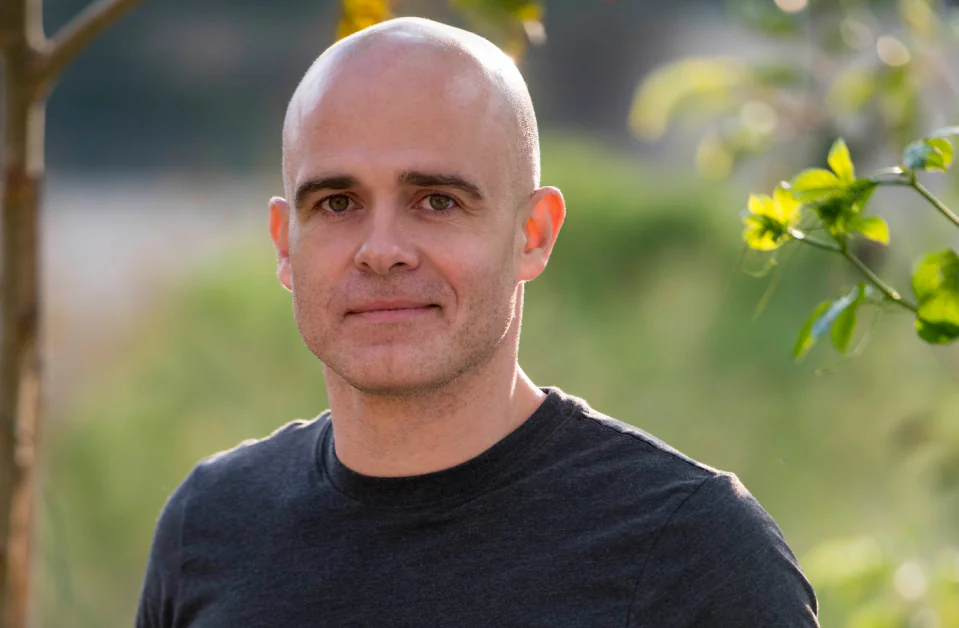Interviews
Zeev Farbman, Co-Founder & CEO at Lightricks – Interview Series

Zeev Farbman is the Co-Founder & CEO at Lightricks, a pioneer in innovative technology that bridges the gap between imagination and creation. As an AI-first company, with a mission to build an innovative photo and video creation platform, they aim to enable content creators and brands to produce engaging, top-performing content. Their state-of-the-art technology is focused on photo and video processing and is based on both groundbreaking computational graphic research and generative AI features.
What initially attracted you to computer science?
I grew up in a science-minded house with both parents trained as mechanical and electrical engineers. We emigrated to Israel when I was 12, where I developed an interest in computers and always liked creating beautiful pixels, starting with using Basic when I was just ten. The field's capacity for problem-solving and innovation was a major draw.
By the time I entered university, computers had already become valuable tools for creative tasks, such as enhancing photos, similar to the edits being done for high-end magazines. Though I gravitated toward computer graphics and image processing, I was fascinated by all the areas of computer science and learned what I needed to advance my studies.
Could you share the story of how an academic discussion you had about editing images on a smartphone suddenly created a lightbulb moment for a new business opportunity?
My research colleagues and I were working on new ways to manage the characteristics of pixels that make up a digital image. This was during the time when social media was just entering the “selfie” era, and we were having a hard academic discussion about the limitations of image editing on mobile devices. We were exploring how smartphones, despite their growing camera capabilities, lacked sophisticated editing tools.
This gap in the market led to a eureka moment. We envisioned a mobile app that could bring professional-level photo editing to the average smartphone user, making it as easy as a few taps on the screen.
How did this discussion then transition to the launch of Lightricks?
We realized that academic research, while valuable, wouldn't have as broad an impact on as many people. And with the explosion of social media, there was an opportunity to leverage our knowledge – so we transitioned from academia to industry and created Lightricks, a fully bootstrapped company.
The first product that you launched in 2013 was Facetune. What was the initial concept for this app, and what made it such a huge success?
The initial concept for Facetune was to democratize photo retouching. Before Facetune, such editing was mainly reserved for professionals using complex software. We simplified this process, enabling users to achieve magazine-level photo retouching on their phones. Its success was due to its simplicity and the increasing desire for high-quality social media content.
In the beginning, we were aware that every expense, even an additional table, was significant. One of our co-founders actually chased journalists to introduce our app because we had no advertising or marketing budget. As we grew, we needed office space but couldn't afford much. We ended up renovating an abandoned student dorm into our office space. It started humbly but eventually became a great workspace.
What are some of the other popular tools you have offered over the years?
Following Facetune, we expanded our suite with apps like Enlight, a more comprehensive photo editing tool, and Videoleap, which brought our approach to video editing. Each tool was designed with the same philosophy: to make professional-grade creative tools accessible. For example, Videoleap offers powerful video editing features in a mobile-friendly format, making it easier for creators to produce high-quality video content.
How have your legacy tech stack and apps evolved with the advent of generative AI?
For a long time, our backend systems have depended on different degrees of AI to edit content without disrupting the original source. Over time these have evolved, and it is only in the last year or so that the AI layers are visible – and understood – by users.
These intuitive features integrate a setting, makeup, hair, or clothing in a way that assists in understanding user intent and automating complex tasks. For instance, AI-driven features in photo editing can suggest edits based on the content of the photo, or automate tasks like object removal or style transfer, making the process more efficient and creative.
Lightricks has recently released an open-source variant of Stable Diffusion’s AnimateDiff called LongAnimateDiff. What is this specifically and what should users expect from this tool?
LongAnimateDiff is our open-source contribution to the community. It offers advanced capabilities for animating sequences but also extends the number of frames that can be created to 64. It doesn’t sound like a lot, but it’s a tremendous leap toward true generative AI video.
You stated recently that you believe that photo editing will soon be a commodity, could you elaborate on this statement and how it will impact software companies?
It’s not a surprise that advanced photo editing tools have become widespread and user-friendly. Correcting or enhancing photos was once only done by experienced photo editors using expensive software and hard to come by computing systems. Today, you can fix a selfie with the flick of your finger. And now even the early challenges of the first AI images that made them awkward looking and non-realistic have been addressed.
Video will be coming right behind – and as democratization expands, any unique selling points for software companies will increasingly lie in user experience, community building features, and specialized functionalities. Companies will need to innovate constantly to provide value beyond the basic editing capabilities that will become standard.
What is your vision for the future of the creator economy?
In the future, I see the creator economy becoming even more dynamic and inclusive, with AI playing a pivotal role. AI will unlock new tools and opportunities, especially in areas like video creation, where it can automate time-consuming processes or generate new content ideas.
This will lower the barriers to entry, allowing more people to participate in the creator economy. For example, AI could enable creators to generate custom animations or enhance video quality, opening new avenues for creativity and monetization. The impact of AI will be to make sophisticated content creation more accessible, thus empowering a broader range of voices and talents in the digital landscape.
Thank you for the great interview, readers who wish to learn more should visit Lightricks.












